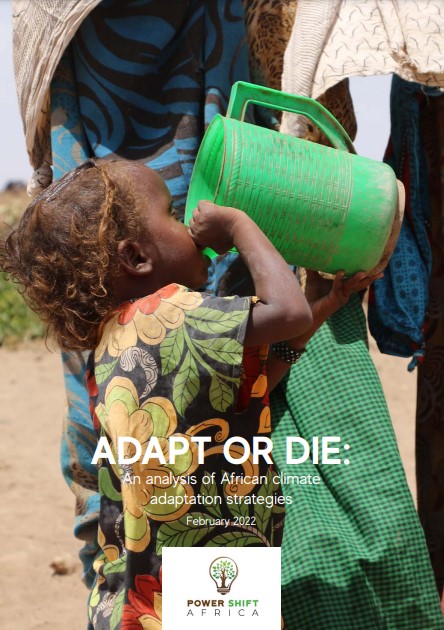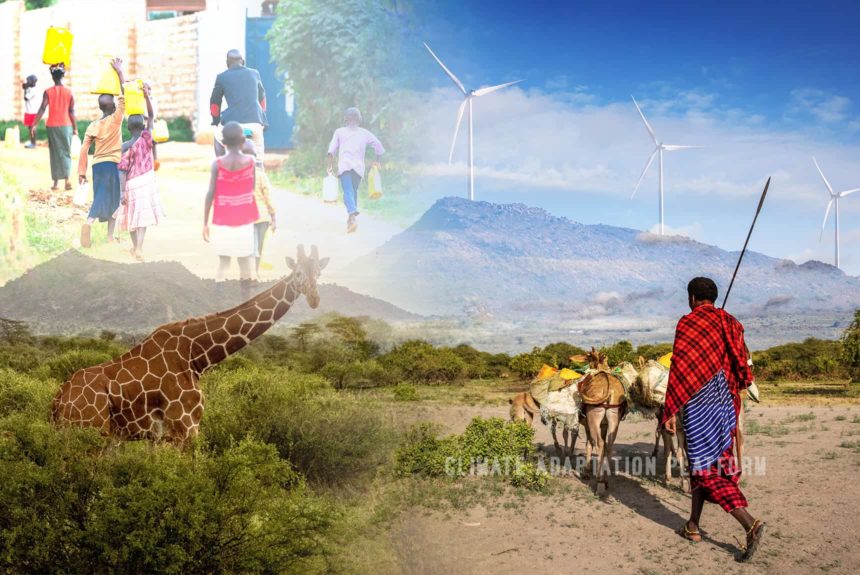Ethiopia, Liberia, Sierra Leone, South Africa, South Sudan, and Togo spends more than 2.8% of their GDP on climate adaptation. The Power Shift Africa study “Adapt or Die: An analysis of African climate adaptation strategies” reports.
Power Shift Africa, a Nairobi-based think tank, mentions that this increased climate adaptation budget is reflected in the countries’ National Adaptation Plans submitted in 2018.
The report shows the climate change impacts these countries are suffering and how much they are spending to adapt to it.
Ethiopia and Kenya face droughts every year, affecting millions of their residents.
Ethiopia’s adaptation measures will cost around USD 6 billion a year to implement until 2030. The spending is equivalent to 5.6% of its current GDP.
Kenya’s losses to climate change impacts are estimated at 3 to 5% of its GDP. It has earmarked USD 62 billion until 2030 for adaptation and resilience-building. However, it can only finance 10% of this budget, and 90% will require international finance.
South Sudan is one of the most vulnerable countries to climate change. Extreme rainfall and subsequent floods result in water-borne diseases, displacement, and damaged crops and farmlands. The years of conflict have also weakened its resilience capacity. The country could lose 10% of its GDP due to its meagre adaptive capacity. The government is preparing to spend 3.1% of its GPD, equivalent to USD 376.3 million, on adaption every year until 2030.
Liberia’s highly populated coastal areas face severe flooding due to sea-level rise and the increasing frequency of heavy rainfall, costing up to USD 250 million in land and infrastructure damages. The lack of financing is why the country cannot implement its climate adaptation programs.
Sierra Leone faces temperature rise, frequent rainstorms and floods, affecting 90% of its population. The country is set to spend 2.3% of its current GDP, equivalent to USD 90 million, on its climate adaptation.

These African developing countries contributed least to climate change per GHG emissions yet are bearing the brunt of the climate crisis due to a lack of resources and capacity to cope.
Hence, the report says that the financial and technical support of prosperous economies that have caused climate change is crucial for African countries to adapt to climate change impacts.
Mohamed Adow, head of the Power Shift Africa, says that “This report shows the deep injustice of the climate emergency”. Adding, “It is simply not acceptable for the costs to fall on those suffering the most while contributing the least to climate change” (Study: Africa Nations, 2022).
The report hopes that COP27 that Egypt hosts will be framed as the “Adaptation COP” and must help elaborate on the global goals of adaptation which would lead to its adoption in COP28.
It also aims to see developed economies scale up climate financing to poor and climate-vulnerable countries to help them cope and adapt to the increasing impacts of climate change.
To read the full report, click the link provided in the “Source” section below.
Source:
Adapt or Die: An analysis of African climate adaptation strategies. February 2022. Power Shift Africa. Retrieved from https://powershiftafrica.org/storage/publications/Adapt_or_Die_Final_1645869924.pdf
Study: African Nations Forced to Spend on Climate Adaptation. (2022, February 26). Asharq Al-Awsat. Retrieved from https://english.aawsat.com/home/article/3497961/study-african-nations-forced-spend-climate-adaptation



Leave a Reply